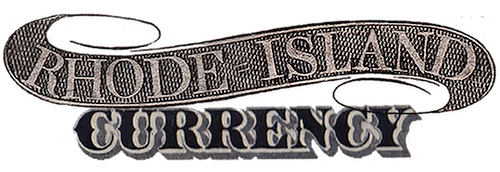Rhode Island Hospital Trust, Providence
Incorporated on October 24, 1867, Rhode Island Hospital Trust was the first trust company in New England. It owes its unique name to the fact that it was chartered by the board of trustees of Rhode Island Hospital. The new hospital had been founded four years earlier and the trust company was intended to help finance it. Hospital Trust’s original charter required the bank to pay one third of its annual net profit above 6 percent to Rhode Island Hospital. This provision was to remain in effect until another institution stepped forward to assume a benefactor’s role. While that never came to pass, the philanthropic provision was cancelled in 1880 by mutual agreement of the bank and the state’s General Assembly. In exchange, the hospital received 100 shares of the bank’s stock.
Hospital Trust was organized by William Binney, who served as the company’s first president until 1881. Amos D. Smith, brother of former Governor James Y. Smith, was elected chairman. It was initially located in a building on South Main Street and later moved to two different locations on Westminster.
The bank’s original directors were: Alfred Anthony, Truman Beckwith, Rowse Babcock, John Carter Brown, Stephen Harris, Edward King, Earl P. Mason, Edward D. Pearce, Amos D. Smith, Rufus Waterman, Henry B. Anthony, Amos C. Barstow, Ambrose E. Burnside, Zachariah Chafee, Robert H. Ives, Christopher Lippitt, Samuel M. Noyes, William S. Slater, Thomas P. Shepard, Marshall Woods and Thomas P. I. Goddard.
As a trust company, Hospital Trust did not issue large-sized national banknotes. However, in December of 1933 the institution incorporated the Rhode Island Hospital National Bank, which did circulate small-size Series 1929 bills. These are Type II nationals, of which 195 are known to exist today, including 19 $100 bills.
Steven Whitfield explains the creation of the national bank further:
“After the nationwide banking crisis of 1932-3, the trust company decided it would be desirable to separate the commercial banking activity from the trust department by establishing a separate national bank. There was real concern at the time that the Federal Government might ‘nationalize’ all banks in the country and stringently regulate even the very profitable trust activities. Therefore, it appeared wise to placate the government by placing the commercial banking function under the control of the existing national banking system.” — Steven Whitfield, “Cashier’s Pocket Piece?” Paper Money, Vol. XX, No. 3, Whole No. 105, May – June 1983.
In the 20th century, the bank grew steadily and acquired twelve other formidable Rhode Island financial institutions, from as the Aquidneck National Bank to the Columbus National Bank. In 1985, Hospital Trust was acquired by Bank of Boston, although it continued to operate under its own name in Rhode Island. Bank of Boston officially retired the Hospital Trust name in 1998.
Hospital Trust History Timeline:
• 1863: Rhode Island Hospital founded
• October 24, 1867: Rhode Island Hospital Trust Company founded by the board of trustees of Rhode Island Hospital. It is the first trust company in New England
• January, 1868: Business begins at 37 South Main Street (in a building that was likely situated where the Licht Judicial Complex stands today)
• 1873: Hospital Trust purchases a building on South Main Street at the corner of Hopkins Street for $15,000. The bank alters the structure and relocates there. At the time, this address was listed as 42 ½ South Main. Today, it is 66 South Main
• 1891: Hospital Trust erects a building on Westminster Street, which is expanded in 1902.
• June 24, 1904: First National Bank of Providence (Charter #134, formerly the Mercantile Bank, founded 1854) absorbed by Hospital Trust
• January 10, 1906: American National Bank of Providence (Charter #1472) absorbed by Hospital Trust
• August 22, 1916: Hospital Trust signs a contract with York & Sawyer for a new building on Westminster Street.
• January 11, 1919: After years of delays due to World War I, Hospital Trust opens the banking hall of its new building at 15 Westminster (the rest of the building was completed after the armistice)
The new building is 11 storeys and 174 feet tall, made of Indiana limestone, and designed in a style that has been described as, “an English conception of the Italian Renaissance”
• May 26, 1922: Providence County Savings Bank of Pawtucket (founded 1853) absorbed by Hospital Trust
• January 16, 1926: Producers National Bank of Woonsocket (Charter #1421, formerly the Producers Bank, founded 1852) absorbed by Hospital Trust
• January 12, 1929: National Globe Bank of Woonsocket (Charter #1423, founded 1834 as the Providence County Bank) and Mechanics Savings Bank of Woonsocket (founded 1873) acquired by Hospital Trust
• 1930: After acquiring three banks in the city, Hospital Trust constructs a new office building in Woonsocket
• December, 1933: Rhode Island Hospital National Bank organized as a partner of the Hospital Trust Company and granted federal charter #13901. (The trust company operates on one side of the 15 Westminster Street banking hall, the national bank on the other)
• January 31, 1949: National Bank of Commerce and Trust Company (formerly the Bank of Commerce, founded 1851) absorbed by Hospital Trust
• 1950: Aquidneck National Bank of Newport (Charter #1546, formerly the Aquidneck Bank, founded 1854) absorbed by Hospital Trust. It becomes the Newport branch of Hospital Trust
• November 1, 1951: Hospital Trust absorbs the Rhode Island Hospital National Bank and its charter is forfeited
• October 31, 1953: Phenix National Bank of Providence (Charter #948, formerly the Phenix Bank, founded 1833) absorbed by Hospital Trust
• 1963: Wickford Savings Bank (founded 1855) absorbed by Hospital Trust
• 1969: Hospital Trust reassumes its national charter, and becomes Rhode Island Hospital Trust National Bank
• 1973: Hospital Trust Tower, at One Financial Plaza, is built as the bank’s new headquarters. The 413-foot, 30-storey structure was designed by John Carl Warnecke and Associates of Los Angeles in 1970. Paul Rudolph’s proposal was rejected. Today it is known as the Sovereign Bank Tower
• November 23, 1983: Bank of Boston (formerly the Massachusetts Bank, founded in 1784) announces its intention to acquire Hospital Trust National Bank for $59 a share, for a total of $120 million
• November 1, 1984: Columbus National Bank of Providence (Charter #13981, founded 1934) absorbed by Hospital Trust
• 1985: After a shareholder lawsuit and regulatory hurdles, Bank of Boston’s purchase of Hospital Trust is approved at the new price of $150 million. Hospital Trust retains its name in Rhode Island
• July 8, 1994: Citizens Financial Group wins bid for failed Old Stone Bank, outbidding Hospital Trust/Bank of Boston and Shawmut
• May 26, 1998: Hospital Trust has its name officially changed to BankBoston
• March, 1999: Fleet Financial Group (formerly Industrial National Bank) announces its acquisition of BankBoston to form FleetBoston Financial Group. BankBoston had previously absorbed Hospital Trust
• 2002: Fleet Financial donates Hospital Trust’s former building at 15 Westminster Street to the Rhode Island School of Design, which today uses the former banking hall as a library, and the rest of the building as a residential hall
• June 13, 2005: Fleet Financial Group absorbed by Bank of America (Charlotte, North Carolina)
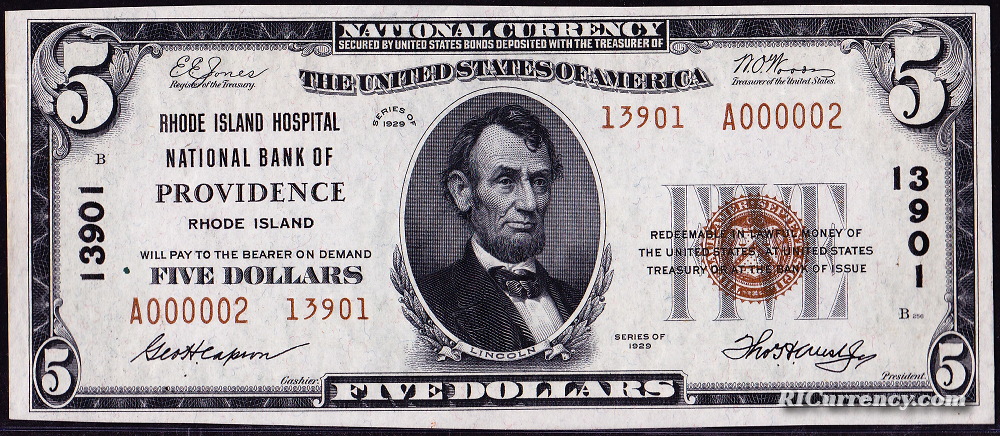




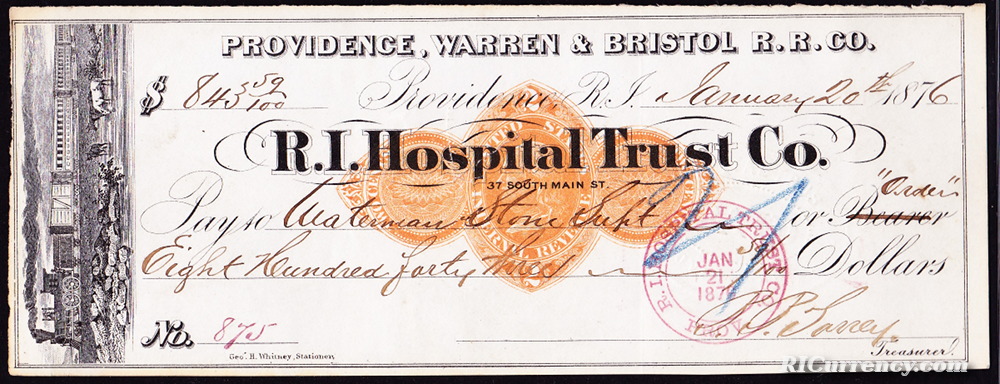
Hospital Trust check from January 20, 1876 showing the bank’s early address on South Main Street.
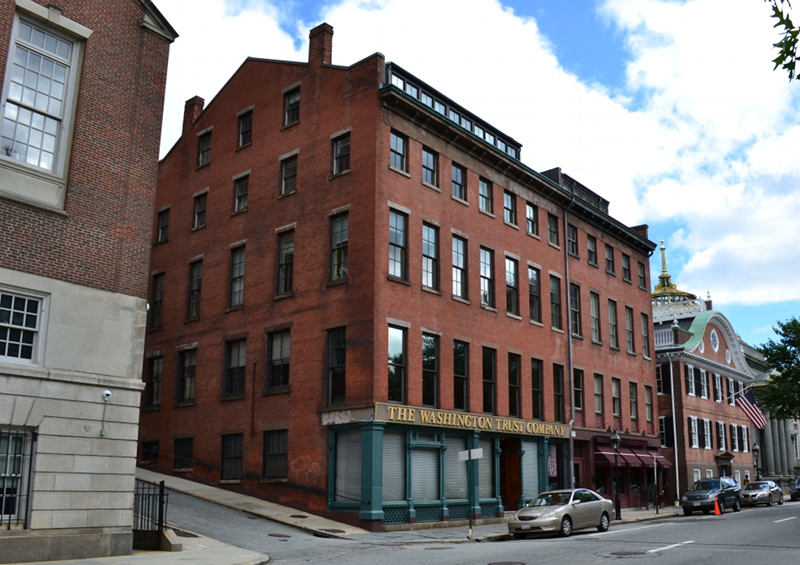
This building at the corner of South Main and Hopkins was purchased and remodeled by Hospital Trust in 1873. It served as the company’s office until 1891. Today, it houses an office of the Washington Trust Company.
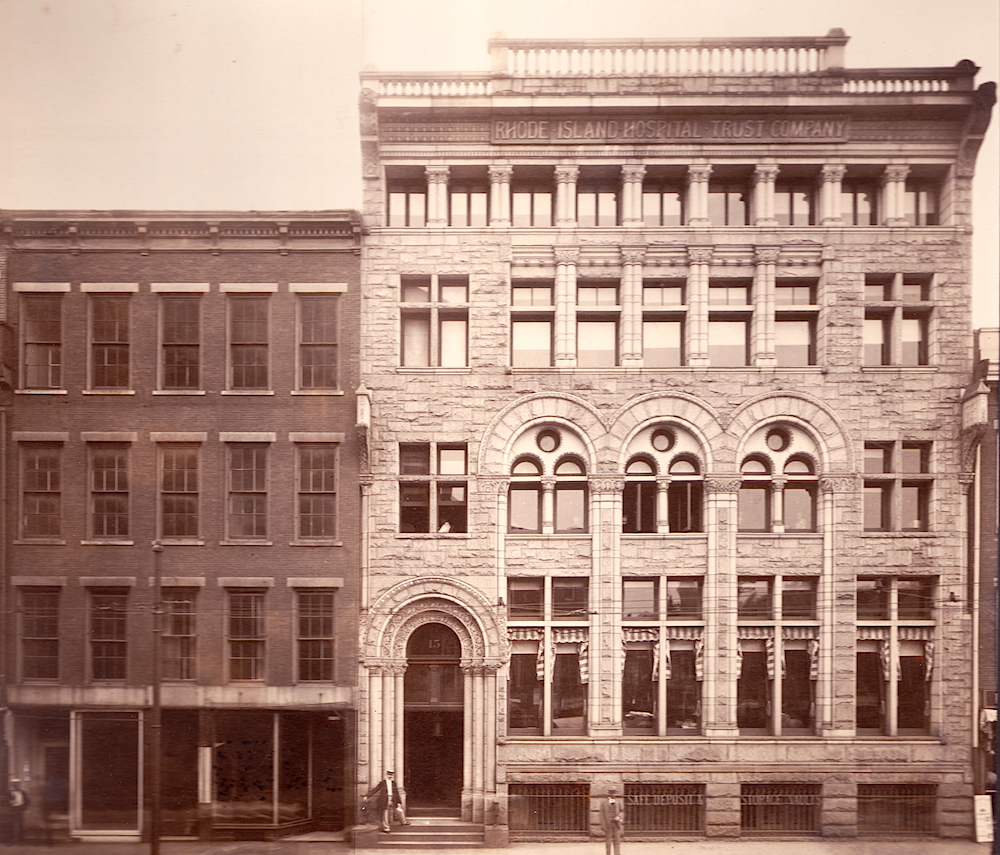
The first Hospital Trust building on Westminster Street, built 1891.
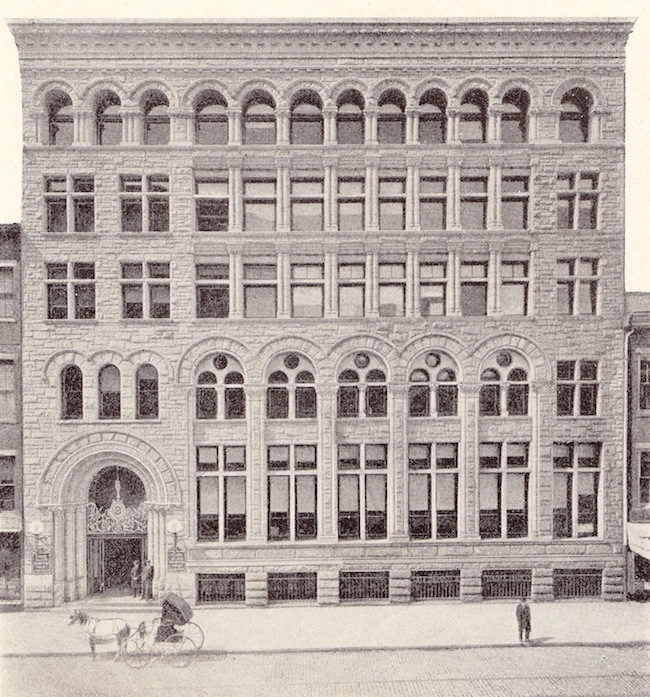
The building after its 1902 expansion.
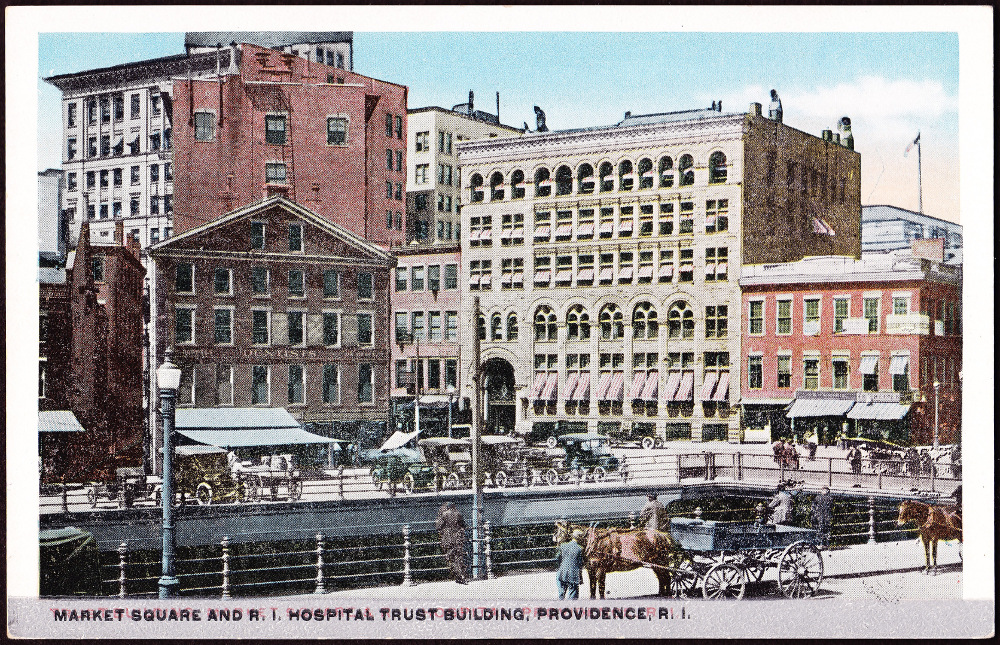
A postcard from the era.
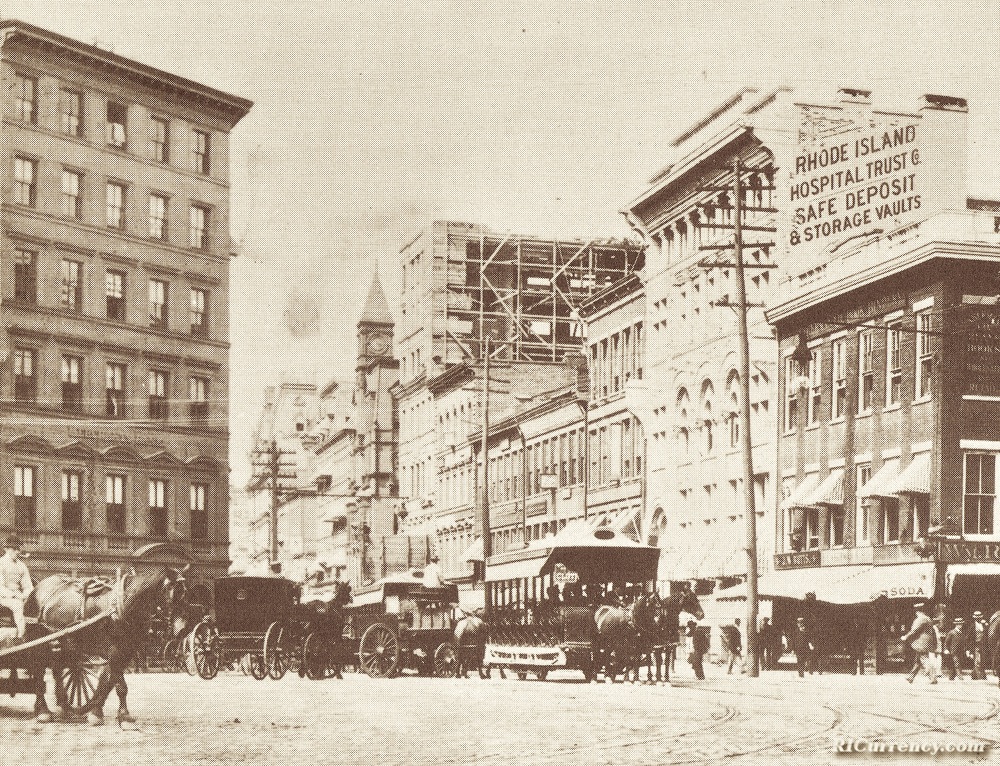
Westminster Street about 1892, showing the first Hospital Trust building across the street from the Merchants Bank. The structure under construction in the background is the Industrial Trust Building on Exchange Street.
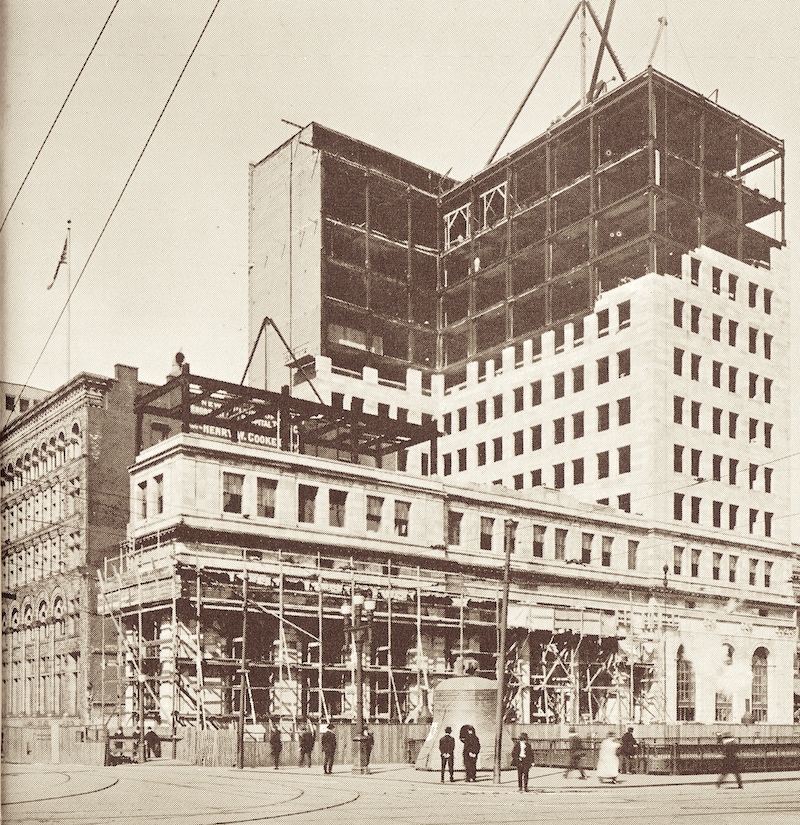
The new Hospital Trust Building at 15 Westminster under construction, circa 1917. It is being built around the bank’s old edifice, which is visible at left. Eventually that building was torn down and the southern half of the new building completed.
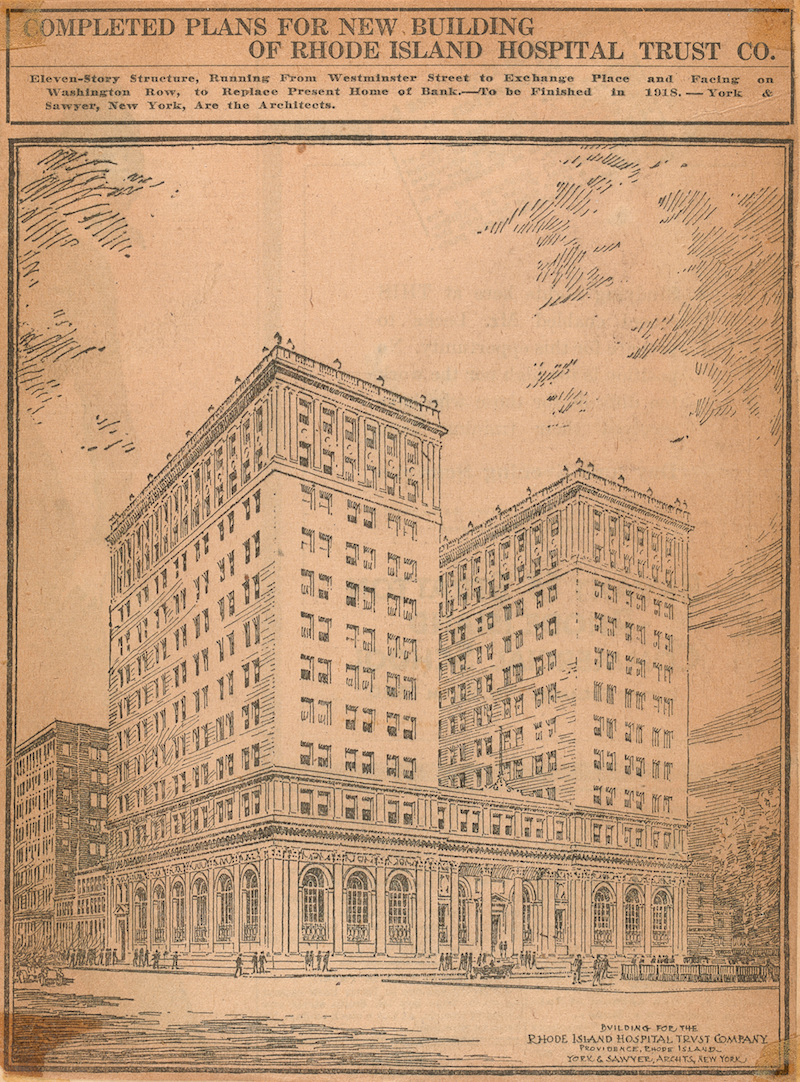
Newspaper clipping showing a rendering of the 1918 Hospital Trust Building
“Page 160, Westminster Street; Exchange Place; Washington Row”, VM011_03_03_160, John Hutchins Cady Research Scrapbooks Collection, Providence Public Library, Providence, RI. Reprinted with permission.

Built between 1916 and 1919, Hospital Trust’s new home on Westminster Street was designed by York & Sawyer.

Today, the former Hospital Trust building at 15 Westminster Street is home to the Fleet Library at the Rhode Island School of Design.

Detail of the façade.
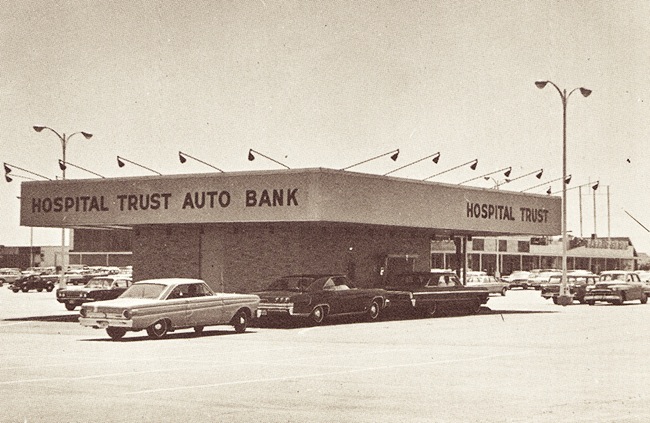
Hospital Trust’s East Providence branch, 1960s.
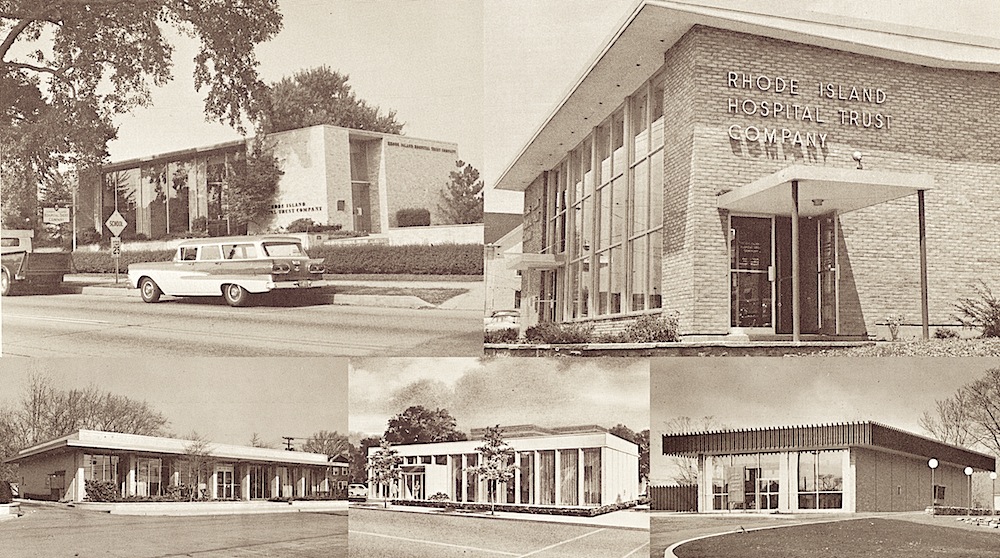
Hospital Trust branches of the 1950s and 60s. Clockwise from left: East Greenwich, Pawtucket, Wakefield, Cranston, Warwick.
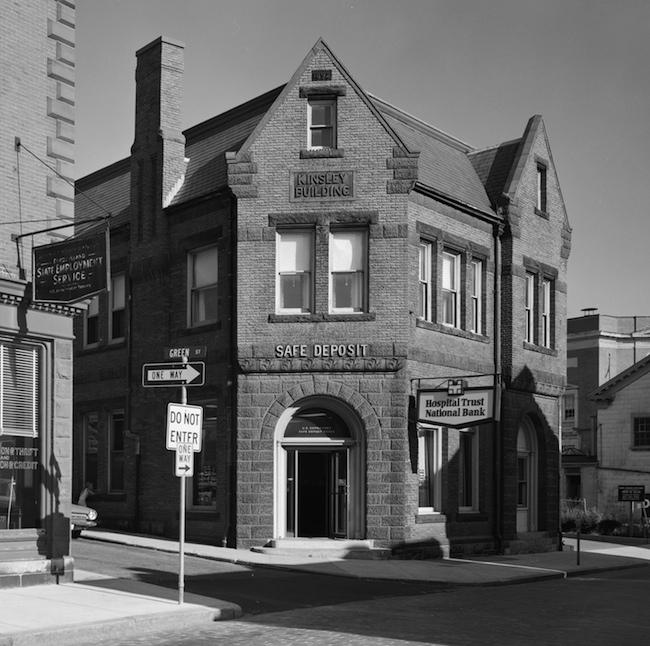
Hospital Trust’s branch on Thames Street in Newport, 1972. This was the former home of the Aquidneck National Bank. (Source: Library of Congress.)
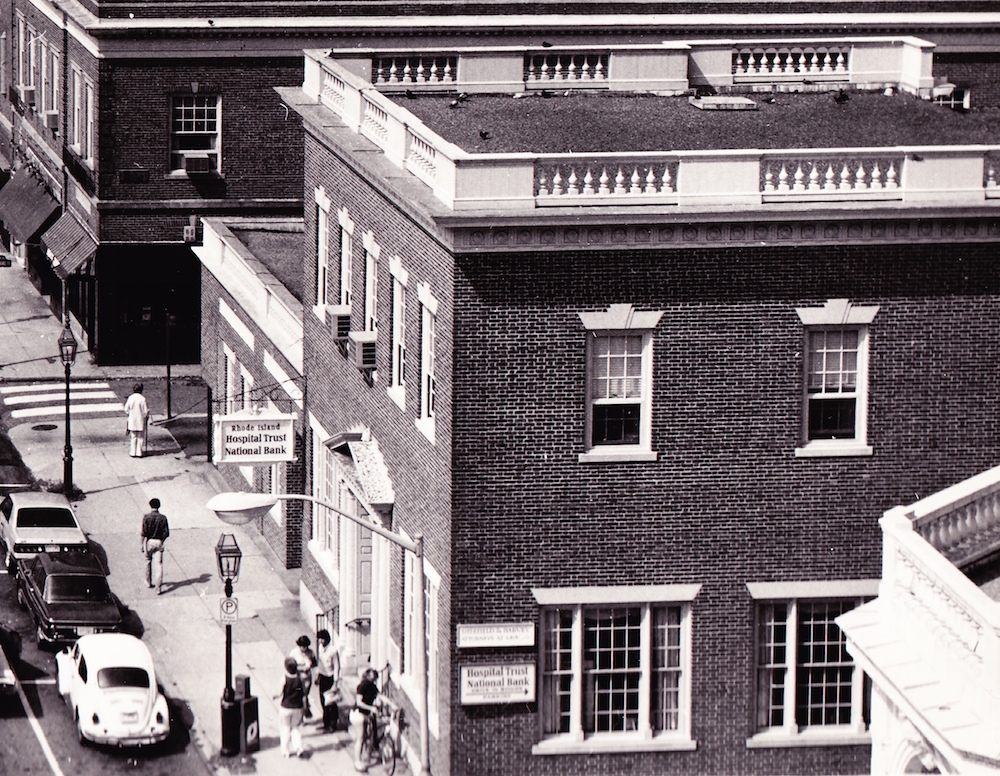
A Hospital Trust branch on Washington Square in Newport, circa 1970s. This building formerly housed the National Exchange Bank of Newport, which had merged with Aquidneck National Bank in 1926.

Hospital Trust Tower was designed by John Carl Warnecke and Associates of Los Angeles in 1970 and completed in 1973.
